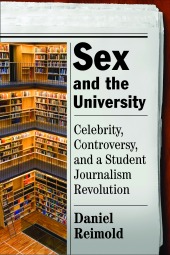At this past weekend’s SPJ Region 3 Conference, Meredith Cochie delivered a hyperactive Broadway-esque performance– interrupted only by the occasional “coffee burp” (her words). In a manic 50-minute session that brought a blah-carpeted University of Florida auditorium to life, Cochie shared a bevy of tips aimed at helping j-students stand out from the job-seeking masses and land a gig worth bragging about on Facebook.
—
As the esteemed UF journalism alum and self-described “journo-maniac” shouted to an audience literally hanging on her every word, “I’m going to tell you some things you already know. I’m just going to say them louder.”
—
Below is a brief highlight reel of what she laid out. Enjoy.
—


 —
—
—
How to Land a Job and Impress People…
–
1) Be a know-it-all. Or in Cochie’s words, “Be a know-it-all about what you want to be a know-it-all about.” Journalists need to know about the world in general and should have near-encyclopedic knowledge of one field or subject in particular. As the classic saying goes, “Know a little about a lot and a lot about a little.” If you want to report on sports or fashion or write movie reviews, dive in. Study the history. Read related daily news. Identity and write about emerging trends. Participate in online discussions. Share your knowledge breadth and depth in mixed company, including in front of potential employers. Just don’t overdo it. Asinine should not become a three-syllable synonym for you.
—
2) Get a real email address. Potential employers’ first perceptions of you may veer into the unprofessional category if you contact them with a personal email containing a cringe-worthy nickname, potty humor or nonsensically odd word-number configurations. Two whoppers that students apparently used when reaching out to Cochie in the past: tequilas69@hotmail and tupac4evah@yahoo.com.
—
3) Analyze what your social media profiles and Google results say about you. When warranted, delete, update, revise or create new content that oozes professionalism while still retaining the essence of you.
—
4) Make an impression in person. At one point, Cochie told the tale of an overzealous student who politely and repeatedly accosted her with business cards and clips and questions about job prospects. Guess what? He stood out to her. Some of his early approaches were a bit abrupt and artless, but his overall persistence and speak-to-strangers-in-positions-of-power courage enabled him to earn a name for himself, one that was backed up over time by the quality of his work. In the digital age, when anything but an email back-and-forth makes some students break out in cold sweats, those who man up and introduce themselves to people they don’t know have an edge.
—
5) Hustle, without being a pimp. Work uber-hard to stand out in some way. As Cochie mentioned, “Tweet, blog, build an online presence, and a professional individual brand. . . . Otherwise, you’re in this big group of normal people and that’s gross.”
—
6) Don’t be late to an interview or any other get-together with an employer or mentor. In Cochie’s words, “When you’re late, you look rude. And silly.”
—
7) “Write. Tons. A lot. All the time.”
—
8) “Build, don’t burn, bridges.” As I can also attest, the people you know are often just as important as what you know and where you’ve worked when attempting to land jobs or make new connections. To be clear, this shouldn’t be about simply collecting contacts that might be called upon for favors later. Phoniness, like Saran wrap, is see-through. And heck, you should genuinely like people. You’re in journalism, after all.
—
9) Don’t overlook the handshake. “When you shake hands with someone, use your hand, not a dead fish.” According to Cochie, the art of the handshake is simple: Be firm without breaking bones; make eye contact without being creepy; and lean in without inching a…bit…too…close.
—
10) Look at your current cover letter one last time, then rip it up. Most applicants’ letters scream perfectly adequate, unmemorable or middle-of-the-road. So do their job prospects. Your goal: Be bold. Do something different. Inject some life into it. Remember, it’s the first chance an employer has to vet you. Hook them with the lede sentence. Show them who you are and why they must hire you immediately.
—
—
Read Full Post »










































































